
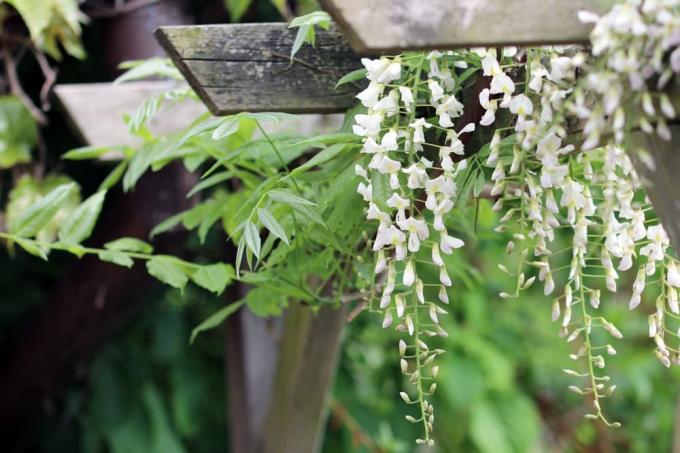
Table of contents
- What toxins do Wisteria seeds contain?
- What are the effects of the lectin contained in the seeds?
- How does the wistarin contained in the bark work?
- How harmful are the alkaloids contained in blue rain?
- What to do if the child has eaten parts of the Wisteria?
- Poison Control Centers
- Poison Information Centers in Austria and Switzerland
Wisteria, also known as wisteria or wisteria, is a traditionally popular climbing plant that manages to conquer entire facades within a few years. However, the plant should only be planted after careful consideration. Although it is a real highlight in the garden, it is not only high-maintenance, but also very poisonous. Families with children, but also grandparents with regular visits from grandchildren, should therefore better use other flowering alternatives when the garden is newly laid out. If you already have wisteria in your garden or in the immediate vicinity, you don't have to panic or dispose of the plant right away. However, it is helpful to know exactly about the various ingredients that can cause poisoning in children, but also in adults.
What toxins do Wisteria seeds contain?
Unfortunately, all parts of Wisteria are highly toxic. However, the individual toxins differed in their type, dosage and consequences for the organism. Lectin is a component found in all legumes. The pods, which are around 20 centimeters long, hang on the Wisteria throughout the winter. Their shells are very hard and only open when the thermometer slowly climbs up again. Once the bean-like seeds have turned a dark brown color and are mature, needed it usually takes no more than a quick tap of your finger for the sleeve to snap open opens.
There is a loud bang that sounds similar to a gunshot. It doesn't take much imagination to imagine the magical attraction that has on children. Unfortunately, it didn't end with the banging. Poison control centers keep reporting that the little ones like to put six to seven of the dangerous Wisteria seeds in their mouths at once.
What are the effects of the lectin contained in the seeds?
There is a high concentration of lectin in the seeds and pods of Wisteria. The poison consists of complex proteins that are able to bind to cells and cell membranes. According to some scientists, if lectins are consumed, this causes the red blood cells to clump together. Just a few grams of this substance can cause massive symptoms of poisoning. For children, it is already sufficient if two seeds of the blue rain are consumed, for adults, symptoms appear from three seeds, which usually appear one to three hours after consumption:
- stomach cramps
- Diarrhea
- nausea and vomiting
- Headache
- paleness
- Dilated pupils
In children, consumption of the seeds can be fatal if a doctor is not contacted as soon as possible.
How does the wistarin contained in the bark work?
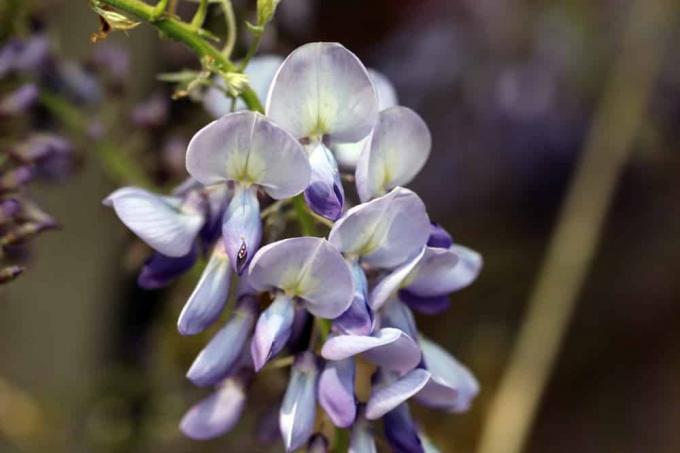
Some people come up with the idea of cutting back the wisteria immediately after flowering so that the poisonous legumes cannot form in the first place. But there are other toxic substances in the roots and bark. Wistarin is only found in wisteria. The poison has been known since the late 19th century. Century when it was first isolated from the bark of the Chinese wisteria, a species of wisteria. According to science, Wistarin should have a slightly tart and bitter taste. To this day, however, researchers still do not agree on exactly what symptoms the poison can cause. In the meantime, the view has prevailed that Wistarin has a similar effect to cystine, which is contained in laburnum. The following symptoms are possible:
- stimulation of the central nervous system
- signs of paralysis
- Burning in the mouth and throat
- Nausea and prolonged vomiting, possibly with blood
- strong thirst
- cramps
- Headache
- sweating and agitation
- twitches
- delirium
If the dose was too high and signs were recognized too late, general paralysis occurs first, eventually progressing to respiratory paralysis associated with circulatory collapse. While children like to put the legumes of wisteria in their mouths, this is rarely the case with pieces of root and bark. The bitter taste will hopefully deter the offspring, but the poisonous parts can still be consumed due to high spirits or ignorance. Contact with the poison through the skin is therefore more likely.
How harmful are the alkaloids contained in blue rain?
With more than 10,000 representatives, the alkaloids form the largest group of plant substances in terms of numbers. They all have in common that they are toxic, contain nitrogen, are classified as bases and are metabolites of amino acids. Alkaloids are also characterized by a characteristically bitter taste. The alkaloids found in all parts of the plant in wisteria are not as dangerous as lectin and wistarin, however, contact can be extremely irritating to the skin and cause dermatitis and other painful irritations trigger.
Alkaloids are said to protect the plant from predators, and occasionally deaths of small animals, especially rodents, have been observed that have tampered with wisteria. Because children sometimes come up with the brightest ideas while playing, it's also important to remind them that wisteria can kill pets, too. If dogs or cats are "fed" with the toxins, even small amounts are enough to cause circulatory collapse and cardiac arrest in the animals.
Tip:
The poisonous wisteria is unsuitable for the family garden. Instead of wisteria, climbing hydrangeas, grapevines and climbing roses climb just as beautifully, but do not pose a threat in any way.
What to do if the child has eaten parts of the Wisteria?
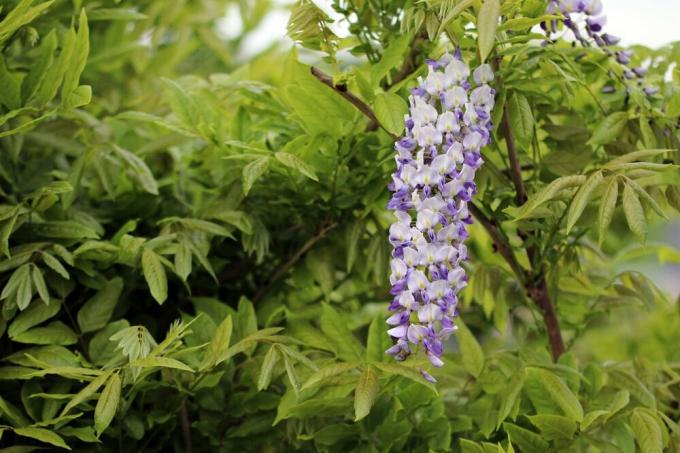
Wisteria isn't the only poisonous plant, and there are far more dangerous specimens. Once a child has eaten bits of wisteria, it helps to keep a cool head. Because the effect of the toxins is of course always in proportion to the amount that has been fed into the body. So it makes a difference whether one seed or ten were swallowed. What to do if a child has eaten parts of Wisteria:
- Call the Git emergency call center
- DO NOT induce vomiting!!!
- Make sure you have plenty of liquids (non-carbonated water, juice, tea) – DO NOT give milk!!!
- give charcoal tablets
- Find out what parts of the plant you eat
So that it doesn't get that far in the first place, parents should make their child aware of the dangers of blue rain brings him and him the dangerous effect of the individual parts of the plant best during a short walk through the garden explain.
Poison Control Centers
Berlin
- Charite Poison Control Center / Poison Control Center Berlin
- giftnotruf.charite.de
- 0 30-19 24 0
Bonn
- Information center against poisoning in North Rhine-Westphalia / Poison Center Bonn - Center for Paediatrics at the University Hospital in Bonn
- www.gizbonn.de
- 02 28-19 24 0
Erfurt
- Joint poison information center (GGIZ Erfurt) of the states of Mecklenburg-Western Pomerania, Saxony, Saxony-Anhalt and Thuringia in Erfurt
- www.ggiz-erfurt.de
- 03 61-73 07 30
Freiburg
- Poison Information Center Freiburg (VIZ) Freiburg University Hospital
- www.giftberatung.de
- 07 61-19 24 0
Goettingen
- Poison information center north of the states of Bremen, Hamburg, Lower Saxony and Schleswig-Holstein (GIZ-Nord)
- www.giz-nord.de
- 05 51-19 24 0
Homburg/Saar
- Information and treatment center for poisoning, Saarland University Hospital and Medical Faculty of Saarland University
- www.uniklinikum-saarland.de/giftzentrale
- 0 68 41-19 240
Mainz
- Poison Information Center (GIZ) of the states of Rhineland-Palatinate and Hesse - Clinical Toxicology, University Medicine Mainz
- www.giftinfo.uni-mainz.de
- 0 61 31-19 240
Munich
- Poison emergency call center Munich – Department of Clinical Toxicology Klinikum Rechts der Isar – Technical University of Munich
- www.toxinfo.med.tum.de
- 0 89-19 24 0
Poison Information Centers in Austria and Switzerland
Vienna, Austria
- Poison Information Center (VIZ) – Health Austria GmbH
- www.goeg.at/poisoning information
- +43-1-4 06 43 43
Zurich, Switzerland
- Swiss Toxicological Information Center
- www.toxi.ch
- 145 (Switzerland)
- +41-44-251 51 51 (from abroad)
 garden editorial
garden editorial I write about everything that interests me in my garden.
Learn more about climbing plants
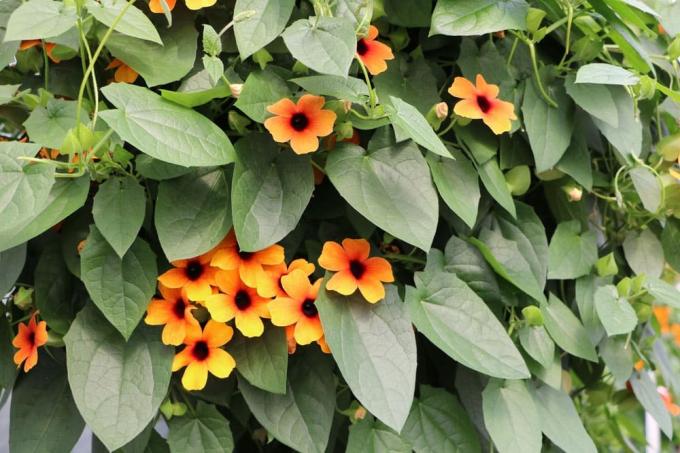
Is black-eyed Susan poisonous?
Black-eyed Susanne can delight all of our eyes with colorful flowers. But if small children or pets are around it, it is important that we also clarify whether it is possibly poisonous. The answer to that is clear and a little surprising!

Black-eyed Susanne, Thunbergia alata: Care from A – Z
Black-eyed Susanne is one of the most popular climbing plants. It is ideal for greening house walls, balconies, fences and pavilions. If you follow our care tips, you will enjoy the splendor of their flowers.
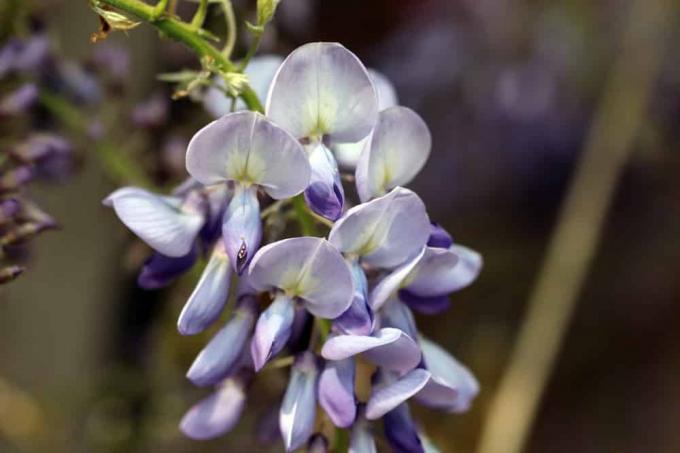
How fast does wisteria grow? | Information about growth
As its name suggests, the wisteria, as an intensive climber, enriches walls, trellis structures and other possibilities for spreading a magnificent, glowing blue sea of flowers. You can find out what you should consider when growing with us in a simple and understandable way.

How fast does Virginia creeper grow? | Information about growth
If you want a trellis or a house wall to be lushly greened, you will find a grateful partner in Virginia creeper. Over time, it can grow into large areas and, especially in autumn, enrich it with colorful foliage. Contact us for helpful information on growth.

Evergreen honeysuckle: care from A to Z
The evergreen honeysuckle is popular for greening walls or fences, because the creeper is green all year round and has beautiful delicate flowers. Although the honeysuckle is not very sensitive, it needs a minimum of care for it to develop well.

How fast does ivy grow? | Accelerate growth effectively
Ivy (Hedera helix) is a true climber that climbs up walls and house walls without any problems and can have a very decorative effect. Once it has taken root, it can literally overgrow large areas in a very short time. You can literally watch him grow.



